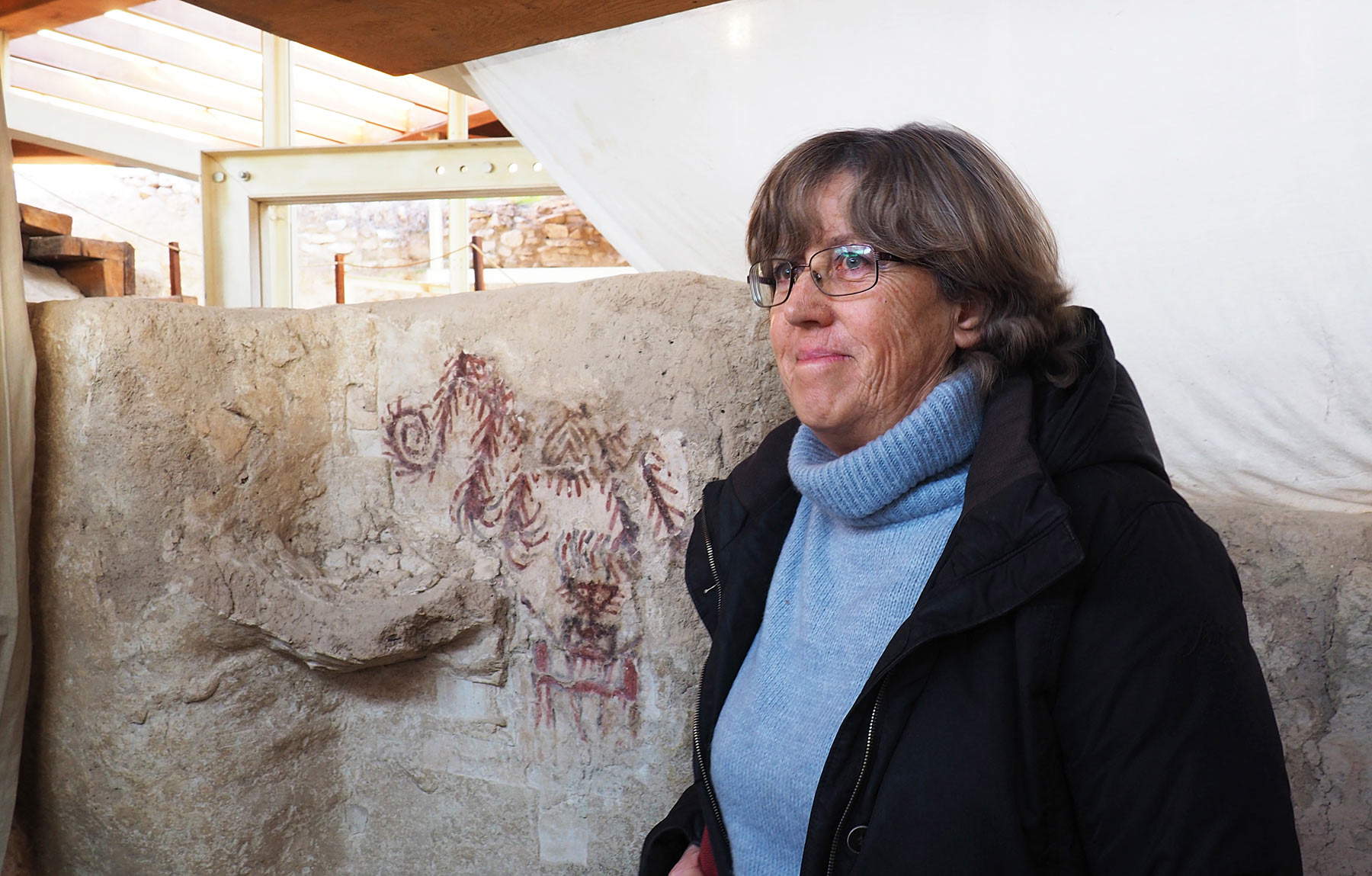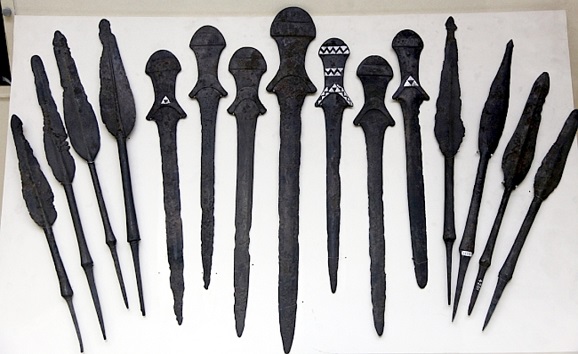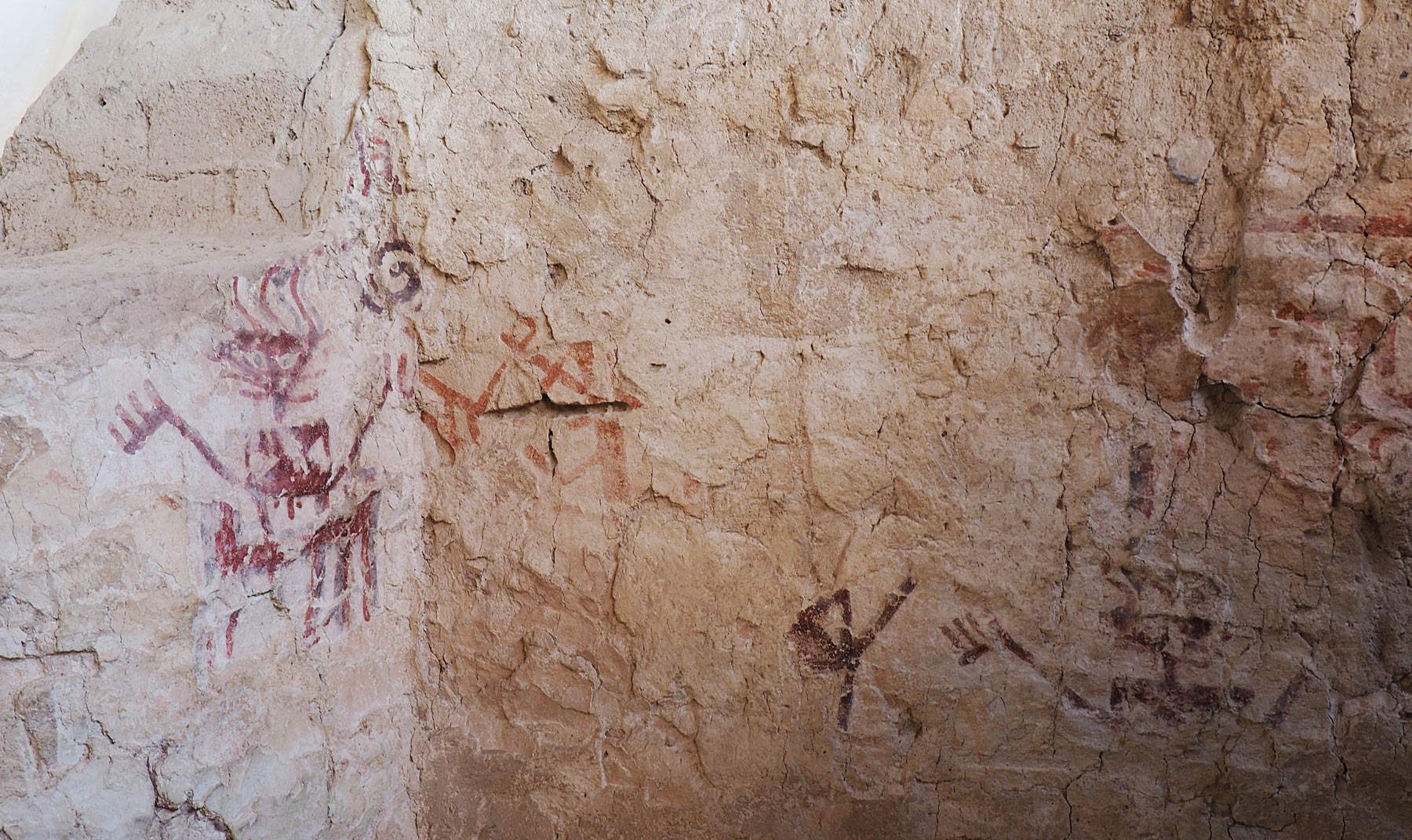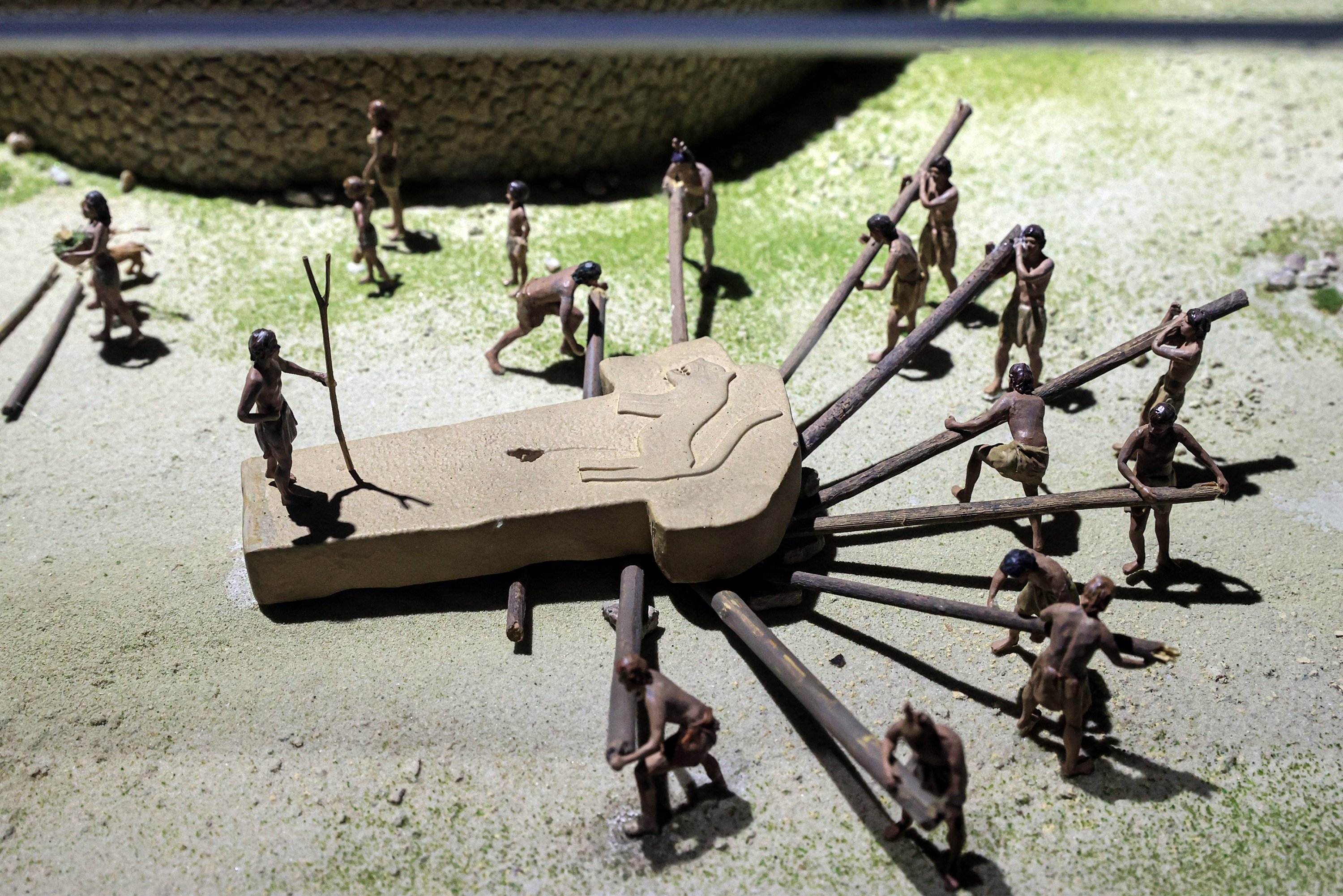At Arslantepe you witness a state born without a city: prewriting bureaucracy, palace power, and humanity’s first swords—a bold answer to Uruk—raw power before writing, urbanism, or crowned kings—now.
Table of Contents
Introduction to Arslantepe's 6,000 Years of History
Arslantepe – or “Lion Mound” – is one of the most important archaeological sites in Turkey, and indeed the world. Located in the fertile Malatya plain of Eastern Anatolia, this 30-meter high mound has revealed a sequence of human settlement stretching from the 6th millennium BCE to the medieval period.
In this post, we’ll explore the site’s extraordinary historical significance, delve into the key archaeological discoveries made here, and offer practical travel advice for those wishing to experience this UNESCO World Heritage Site firsthand.

Louis-Joseph Delaporte and the First Excavations (1932–1939)
The first systematic excavations at Arslantepe were led by French archaeologist Louis-Joseph Delaporte, who worked at the site from 1932 to 1939. His team focused on the Neo-Hittite level, where they uncovered monumental stone sculptures, including the famous stone lions and orthostat reliefs that gave Arslantepe (“Lion Mound”) its name.
Delaporte reconstructed parts of the site’s symbolic architecture, especially the ceremonial Lion Gate. His early publications helped introduce Arslantepe’s Iron Age significance to the wider academic world.

Marcella Frangipane and Modern Research (1990s–Present)
Since the 1990s, archaeologist Marcella Frangipane has led ongoing excavations at Arslantepe. Her team has focused on Level VIA, a Late Chalcolithic layer dating to around 3300–3000 BCE.
Key findings under Frangipane’s leadership include:
- The world’s oldest known swords, made from arsenical bronze and found in a cache inside the palace. These weapons suggest the early emergence of organized warfare and elite warriors.
- A “Royal Tomb”, containing an elite burial accompanied by luxury goods, metal items, and sacrificial remains.
- Clay sealings and stamp seals, offering early evidence of bureaucratic control over storage and resources, predating the use of written records.
- Plastered and painted walls, featuring abstract and symbolic motifs, likely used in ceremonial contexts.
Her work has significantly contributed to our understanding of state formation, social stratification, and early administration systems in ancient Anatolia.

Historical and Archaeological Highlights
Hundreds of small clay lumps stamped with intricate designs were discovered inside the palace. These sealings once locked storerooms and jars, each impression marking who had access. Long before writing spread to Anatolia, Arslantepe’s rulers had invented a system of control and accountability—the very beginnings of bureaucracy.

Blades From Past
In one storeroom of Arslantepe’s 6,000-year-old palace, archaeologists uncovered a cache of slender bronze blades. They turned out to be the oldest swords ever found—delicate but deadly, and a symbol of the moment when power began to rest in the hands of warriors. Standing on that same spot today, you can almost imagine the gleam of metal in the torchlight of a long-vanished king’s hall.

The Painted Walls
Beneath protective covers, archaeologists found traces of ancient wall paintings: bulls, abstract figures, and geometric motifs painted in red and black. Fragile but vivid, they are among the oldest murals in Anatolia, reminders that even in the earliest states, leaders used art and symbolism to project authority and belief.

First Settlers
The earliest occupation of Arslantepe dates back to the Neolithic era, around the 6th BC. During this time, small farming communities settled on the fertile Malatya plain, attracted by the nearby Euphrates River. These first inhabitants lived in mudbrick houses, cultivated crops, and practiced animal husbandry. Archaeologists have uncovered stone and obsidian tools, along with some of the earliest ceramics of the region, showing that Arslantepe’s residents were part of the broader network of early agricultural societies in Anatolia. This period laid the foundation for a settlement that would grow in complexity over thousands of years.

Copper Age (4000–3000 BCE)
The site reached a major turning point in the Chalcolithic period (Copper Age, roughly 4000–3000 BCE). During this era, Arslantepe developed into a significant regional center, marked by the construction of a monumental mudbrick palace around 3300 BCE.
This palace is among the oldest known in the world and reflects the emergence of early forms of centralized authority. Inside, archaeologists found storerooms with administrative sealings, painted walls, and even a cache of arsenical bronze swords—the oldest ever discovered—indicating both social hierarchy and organized defense.

The Chalcolithic age at Arslantepe is especially important because it documents the transition from egalitarian farming villages to one of the first examples of a state-level society.

Bronze Age (ca. 3000–1200 BCE)
After the destruction of the Chalcolithic palace around 3000 BCE, Arslantepe entered a new era shaped by Early Bronze Age cultures, including the arrival of the Kura-Araxes culture. These people brought new pottery styles, metallurgy, and burial customs, reshaping the community.

In the Middle and Late Bronze Age, Arslantepe became connected to the expanding Hittite world, serving as a strategic outpost in Eastern Anatolia. Evidence from this time includes fortifications, domestic structures, and administrative remains that show Arslantepe retained importance as both a settlement and a regional hub.

Iron Age (ca. 1200–700 BCE)
With the collapse of the Hittite Empire around 1200 BCE, Arslantepe emerged as the capital of the Neo-Hittite kingdom of Melid. This period left some of the site’s most impressive remains, most famously the Lion Gate, flanked by massive carved stone lions and decorated with relief panels.
These monumental works symbolized royal authority and divine protection while demonstrating a shift from mudbrick to stone construction. The Iron Age layers also contain artistic reliefs depicting rituals, gods, and warriors, reflecting a society with strong political and religious traditions.
Eventually, Melid came under the influence of the Assyrian Empire, which absorbed many Neo-Hittite states into its territory, marking the end of Arslantepe’s independent role.

Roman Period (1st–4th centuries CE)
During the Roman period, Arslantepe was no longer the grand political center it had once been but remained inhabited as part of the wider urban and military landscape around Melitene (modern Malatya). Melitene was a vital Roman frontier city on the Euphrates, home to the Legio XII Fulminata legion. While the mound itself saw more modest use—mainly domestic houses and small public structures—its proximity to such a strategic base tied Arslantepe into the Roman imperial network of roads, trade, and defense.

Byzantine Era (4th–11th centuries CE)
In the Byzantine era, the site continued to host a smaller rural community, with evidence of houses, pottery, coins, and traces of fortifications. Arslantepe was closely linked to Melitene, which had become a bishopric and regional center of Christian administration. Although the Byzantine layers are fragmentary, they illustrate how the mound was reused and adapted over centuries. By the 11th century, the settlement shifted fully to modern Malatya, leaving Arslantepe as a silent mound of history. These later phases, though less monumental, complete the site’s remarkable sequence of continuous occupation spanning over 6,000 years.

Visiting the Site: Practical Tips
Arslantepe isn’t a grand stone city like Ephesus or Göreme Open Air Museum, a tourist-packed ruin. It’s quieter, humbler — a mound that hides 7,000 years of human stories under the soil. When you stand on top, you feel the layers of time stretching beneath your feet: from the earliest mudbrick palaces to the Neo-Hittite kingdom that carved lions at its gates.
It’s a place to slow down, not rush. The silence itself tells you how ancient power might have felt before marble and empire — back when authority was still being invented.
Getting There
Arslantepe is located in the village of Orduzu, approximately 7 km northeast of Malatya city center. The easiest way to reach the site is by car or taxi (15-minute drive). Public buses toward Battalgazi pass nearby, but there’s no direct route to the site.
Opening Hours and Entry
The site is open every day of the year.
Hours: Generally open from 8:30 AM to 5:30 PM (shorter in winter)
Admission: Free of charge
Facilities: Basic visitor infrastructure with walkways, shaded areas, and signage in Turkish and English. Bring water and sun protection in summer.
Best Time to Visit
Spring and autumn are ideal for visiting Arslantepe, with pleasant temperatures and blooming fields. Summer can be extremely hot, so early morning or late afternoon visits are best. Archaeological excavations typically occur in summer, offering the chance to observe ongoing digs.
Touring Arslantepe with The Other Tour
At The Other Tour, we see Arslantepe not just as a mound of ancient mudbrick, but as a place where humanity first experimented with power, art, and community. Just outside Malatya in Orduzu village, you’ll walk where farmers, kings, and warriors once stood. The Malatya Museum sets the stage with treasures from the site—including the oldest swords in the world—before you step onto the mound itself, where the remains of a 6,000-year-old palace still whisper of ceremonies, wall paintings, and the world’s first bureaucracy.
As we guide you past storerooms, painted plaster, and the replica lion statues of the Iron Age kingdom of Melid, you’ll hear the stories of the archaeologists—Louis Delaporte in the 1930s, Marcella Frangipane and her Italian team today—who spent lifetimes uncovering this place. With the Malatya plain stretching out below, Arslantepe comes alive not only as an archaeological site but as a living record of how our earliest civilizations were born.
So, fill in the form below and let’s get the conversation going.










